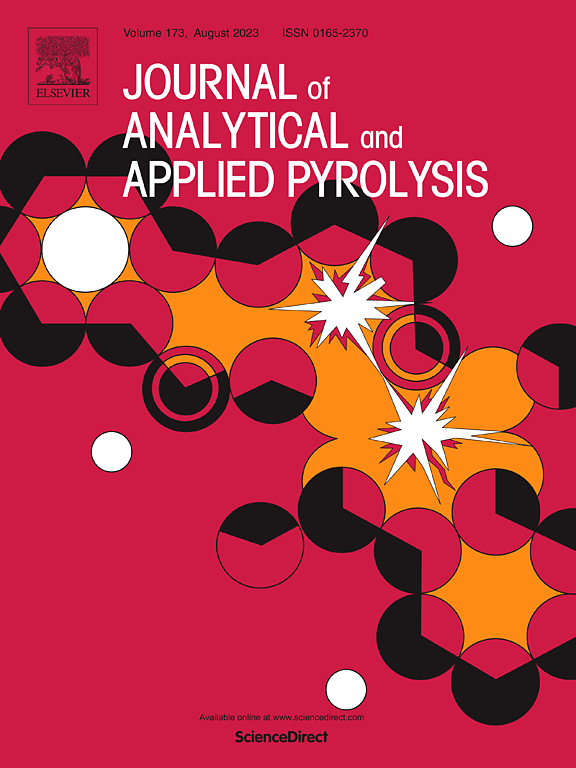Catalyst-free cracking of n-heptane for production of C2 hydrocarbons by microwave discharge plasma in liquid
IF 5.8
2区 化学
Q1 CHEMISTRY, ANALYTICAL
引用次数: 0
Abstract
C2 hydrocarbons are important raw materials in the chemical industry, and the progress of new production processes deserves attention. In this work, C2 hydrocarbons were produced by liquid phase microwave plasma technology using n-heptane as raw material. Ethylene and acetylene were found to be the main products. By high-speed cameras to study the physical process of plasma formation, it was found that the discharge bubble forming cycle is closely related to microwave power, which in turn affects the flow of C2 hydrocarbons. To support our research findings, optical emission spectroscopy (OES) was used to detect the main types and intensities of radicals, and the gas temperature was estimated. It is found that differences in gas temperature and electron densities caused the changes in the concentration of product, the optimal energy efficiency for C2 hydrocarbons production in this study is 0.53 mmol/kJ. The reaction mechanism during microwave discharge was investigated. This technology provides a value reference for promoting future industrial production of C2 hydrocarbons characterized by high efficiency, environmental sustainability, and low energy consumption.
液体微波放电等离子体无催化剂裂解正庚烷生产C2烃
C2烃是化工领域的重要原料,新的生产工艺的进展值得关注。本文以正庚烷为原料,采用液相微波等离子体技术制备了C2烃。主要产物为乙烯和乙炔。通过高速摄像机研究等离子体形成的物理过程,发现放电气泡形成周期与微波功率密切相关,进而影响C2烃的流动。为了支持我们的研究结果,利用光学发射光谱(OES)检测了自由基的主要类型和强度,并估计了气体温度。结果表明,气体温度和电子密度的不同会引起产物浓度的变化,本研究生产C2烃的最佳能量效率为0.53 mmol/kJ。研究了微波放电过程中的反应机理。该技术为今后C2烃高效、环保、低能耗的工业化生产提供了有价值的参考。
本文章由计算机程序翻译,如有差异,请以英文原文为准。
求助全文
约1分钟内获得全文
求助全文
来源期刊
CiteScore
9.10
自引率
11.70%
发文量
340
审稿时长
44 days
期刊介绍:
The Journal of Analytical and Applied Pyrolysis (JAAP) is devoted to the publication of papers dealing with innovative applications of pyrolysis processes, the characterization of products related to pyrolysis reactions, and investigations of reaction mechanism. To be considered by JAAP, a manuscript should present significant progress in these topics. The novelty must be satisfactorily argued in the cover letter. A manuscript with a cover letter to the editor not addressing the novelty is likely to be rejected without review.

 求助内容:
求助内容: 应助结果提醒方式:
应助结果提醒方式:


